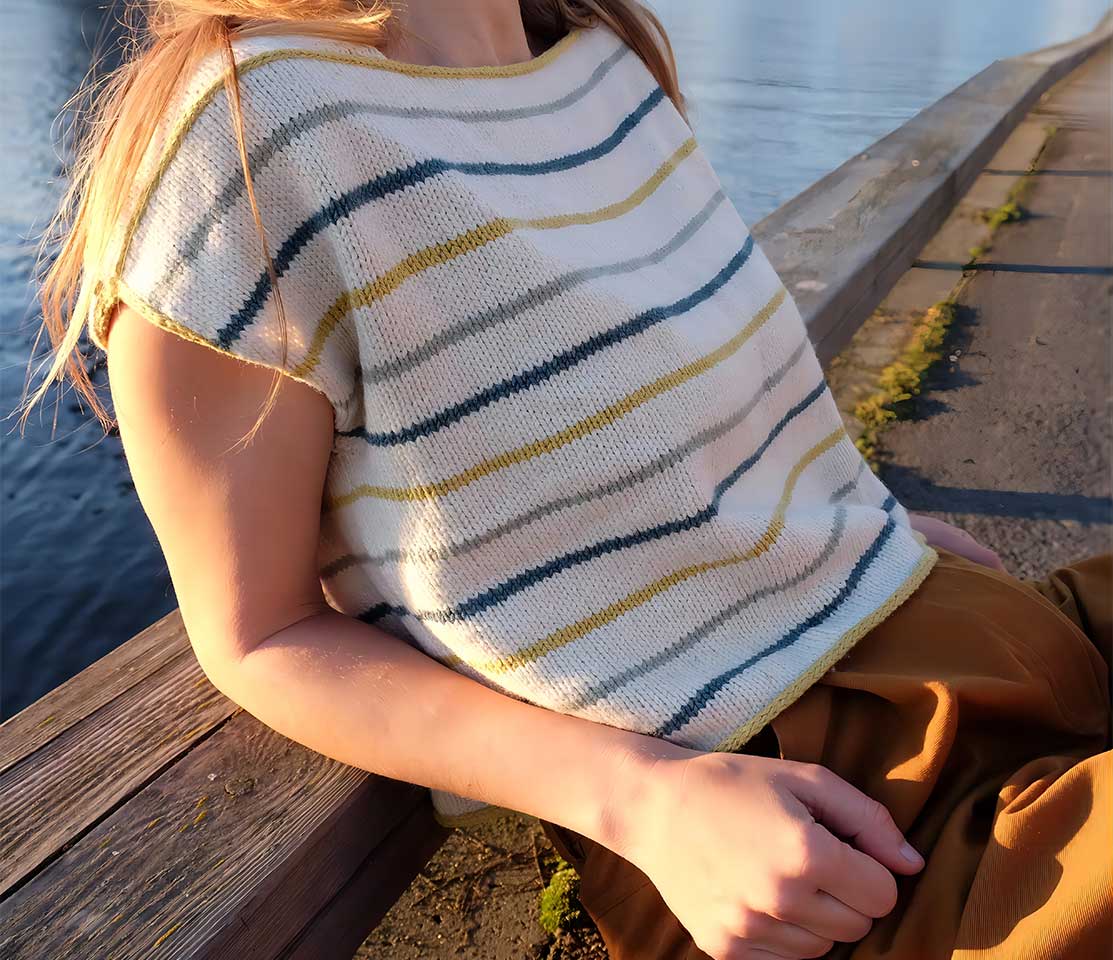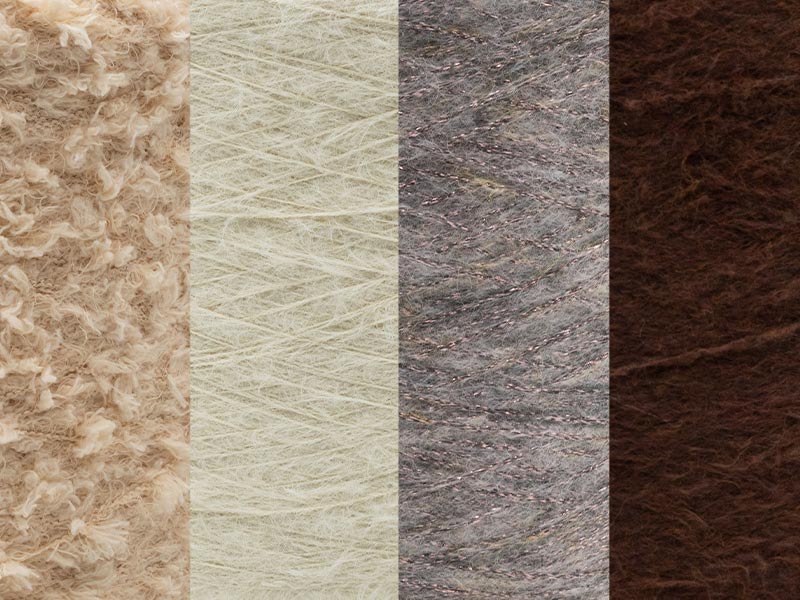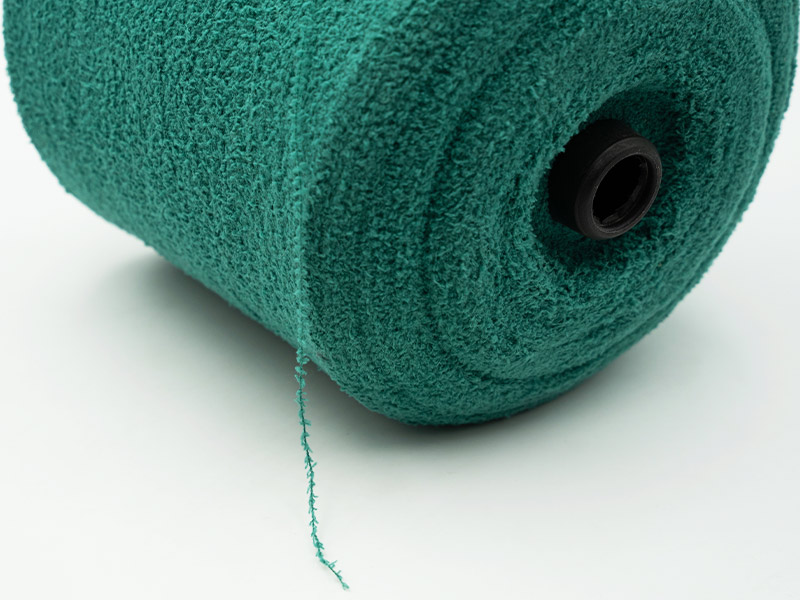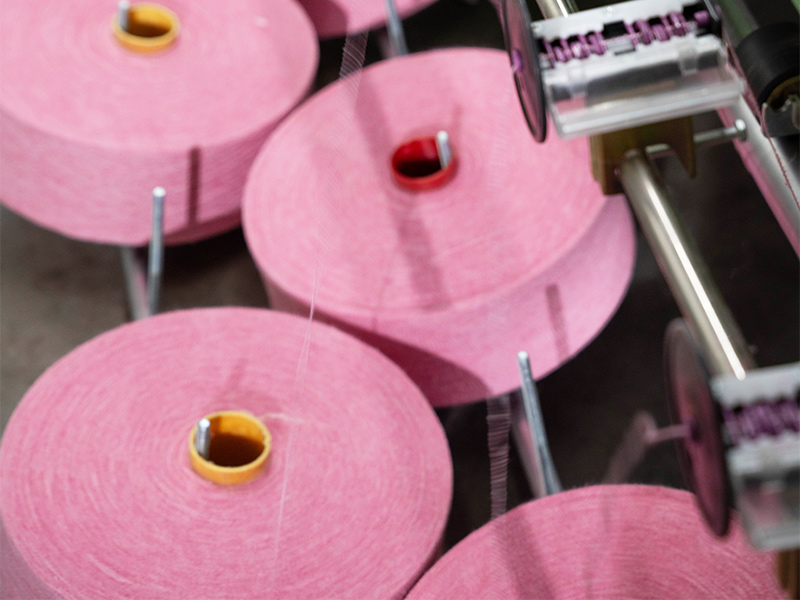Best Yarns for Summer Clothing: Breathable, Lightweight & Sustainable Options for Manufacturers
Finding the right yarn for summer clothes is a problem that all crafters and designers have to deal with when the weather gets warm. Thick blends of wool and acrylic may be great for winter sweaters, but they can be too warm and sticky in the summer.So, what kind of yarn is best for the summer? Cotton, linen, bamboo, and blended fancy yarns that are light and breathable are the answer. They are made for comfort and style.
This guide will show you the best types of yarn to use for summer projects, compare their features, and give you some fun ideas for your next collection or DIY project.
Why it's important to choose the right yarn for summer
It’s not just about how the yarn looks; it also affects how comfortable and useful your clothes are. Here are some types of yarn that are good for summer:
Breathable: Lets air flow through to keep skin cool.
Moisture-absorbent: Absorbs moisture, which makes it less sticky and sweaty.
Lightweight: Stops things from getting heavy when you wear them.
Durable and easy to care for: Strong and simple to care for, especially for everyday wear.
Five Best Types of Yarn for Summer
Let’s look at the fibers that are most popular in warm-weather fashion:
|
Yarn Type |
Main Fiber |
Texture & Feel |
Breathability |
Ideal For |
|
Cotton Yarn |
100% Cotton |
Soft, smooth, natural |
Excellent |
T-shirts, tops, baby clothes |
|
Linen Yarn |
Flax fiber |
Crisp, cool, gets softer over time |
Outstanding |
Summer shirts, skirts, accessories |
|
Bamboo Yarn |
Bamboo pulp |
Silky, lightweight, eco-friendly |
Excellent |
Tank tops, wraps, scarves |
|
Viscose Blends |
Rayon, polyester mix |
Drapey, shiny, modern look |
Very good |
Cardigans, dresses |
|
Fancy Tape Yarn |
Cotton/polyester flat yarn |
Textured yet breathable |
Good |
Open-knit sweaters, bags, home decor |

1. Cotton Yarn – The Summer Essential
Cotton is hands down the most popular yarn for summer. It’s breathable, moisture-wicking, and has a crisp texture that suits both knitwear and woven fabrics.
Pros:
Soft and comfortable by nature..
It can be washed in the machine and will last.
Great for people who are just starting out and for making a lot of things.
Best Use Cases:
Lightweight tops, crochet bags, baby clothes, and knitwear that are ready to sell at the market for resort or casual collections are the best uses for this.
2. Linen Yarn – The Classic Cool Fiber
The Classic Cool Fiber Linen yarn comes from the flax plant and is known for its dry, cool feel and beautiful drape. It might feel stiff at first, but it gets softer and smoother after you wash it.
Pros:
Excellent breathability.
Gives a rustic, elegant look and adds natural texture.
Long-lasting and can be broken down.
Best Use Cases:
Beachwear, light blouses, and high-end woven fabrics are great for both B2B textile buyers and artisan brands that want eco-friendly options.
3. Bamboo Yarn – Silky & Eco-Friendly
Bamboo yarn is both luxurious and eco-friendly. It has a natural shine like silk, but it’s cheaper and lets air flow through it better.
Pros:
It doesn’t cause allergies and is naturally antibacterial.
Very good at absorbing moisture
Drapes beautifully for clothes that flow.
Best Use Cases:
Eco-friendly fashion lines, light sweaters, and soft summer wraps.
4. Viscose & Blended Yarns – For Modern Summer Fashion
Viscose blends, like viscose-polyester and viscose-nylon, are the best of both worlds. They have the natural coolness of rayon and the extra strength and stretch of synthetics.
Pros:
It’s light and has a silky feel.
Holds its shape better than 100% natural fibers.
Comes in a lot of different colors and textures.
Best Use Cases:
Cardigans that hang down, classy dresses, or knit pullovers that let air in.
5. Fancy Tape Yarn – Trendy & Textured Summer Choice
Tape yarn, which is also called ribbon yarn, is a popular choice for openwork knits and trendy designs. Because it is flat and hollow, air can move around inside it, which makes it surprisingly comfortable in warm weather.
Pros:
It has structure but lets air flow through.
The interesting texture makes it more fashionable.
Good for knitting and crocheting by machine.
Best Use Cases:
Open-knit sweaters, tank tops, accessories, and woven home textiles.
Related Product: Check out our Hollow Tape Yarn and Cotton-Polyester Ribbon Yarn for summer projects that are light and soft to the touch. These yarns are great for both weaving and flat knitting.
How to Choose the Best Yarn for Your Summer Project
When picking out a summer yarn, keep these things in mind:
Project type: Is it a piece of clothing that fits, a loose cover-up, or something for the house?
Desired texture: Do you want it to be smooth and silky or natural and rustic?
Care requirements: Do your customers want fibers that can be washed in a machine?
Budget and production scale: Natural fibers may be more expensive, but they are worth it for markets that care about the environment.
Pro Tip: Blended yarns, like cotton-viscose or bamboo-polyester, are a good choice for brands that want both comfort and durability.
Creative Summer Yarn Projects to Try
Here are some ideas to get designers, crafters, or wholesalers ready for their summer collections:
Crochet Tops & Halters using cotton or bamboo yarns.
Lightweight Sweaters made from viscose blends or tape yarns.
Beach Bags & Hats crafted from durable cotton-linen blends.
Summer Scarves & Wraps with bamboo or hollow fancy yarns.
A breathable, lightweight yarn makes each project more comfortable, even in the sun.
Business Insight: Summer Yarn Trends in Business-to-Business Markets
As brands put comfort and sustainability first, the demand for breathable yarns around the world is growing. People want blends that are good for the environment, textures that work, and the ability to dye things in their own colors.
In the fashion and home textile industries, companies that make custom fancy yarns like air-textured yarns, hollow tape yarns, or bamboo-viscose blends are getting a leg up on their competitors.
Tip for B2B Clients: Work with suppliers who can change the yarn count, composition, and color to make sure that your brand’s summer line is both unique and technically ready for production.
Conclusion: The Perfect Summer Yarn Awaits
So, which yarn is the best for summer? There is no one right answer; it depends on what you want to design and what your customers like. Cotton and linen are still great choices for light comfort. Bamboo and viscose blends are great for a silky drape and a touch of luxury. Fancy tape yarn is a must-try if you want to make something creative and textured.
The most important thing is to find a balance between style, breathability, and sustainability, whether you’re making something by hand or getting yarns for your next clothing line.
Find the right materials for your summer projects at Duoyou Yarn Company. They have everything from classic cotton blends to new air-textured tape yarns.
Related News
Discover more about the latest developments in the yarn industry, explore articles on development trends and innovative technologies, and provide you with more industry insights.

What Is Faux Mink Material? Ultimate Guide to Luxurious, Ethical Faux Fur
Faux mink material is a premium type of synthetic fur designed to imitate the lush, silky softness of real mink fur—without using any animal fibers. As an ethical and cost-effective alternative, faux mink offers elegance, warmth, and versatility for fashion, home décor, and craft applications. Its popularity has surged in recent years as both brands and consumers look for more sustainable, cruelty-free textile options.
But what exactly is faux mink? How is it different from other faux furs, and what makes it ideal for specific projects? Let’s explore everything you need to know.

Centipede Yarn’s Tactile Revolution: Why a Thousand Fiber Legs Outperform Feathers and Chenille
We spend our lives in a world that is characterized by touch. Stone is solid and comforting, down is soft and giving, and sandpaper is rough and abrasive. Textures help us remember things, make us feel things, and map our reality. This tactile language is very important in textiles. But for decades, the search for “novelty” in fancy yarns generally put the visual shock first. This meant things like the flashy plume, the metallic shine, and the big loop. When people thought about it, texture was typically an afterthought, a side consequence of the visual impression.

What Does Plied Mean in Yarn? Understanding Structure, Benefits & Uses
In the world of yarn and textile manufacturing, structure matters just as much as fiber content. One essential term you’ll often encounter is “plied yarn.” But what exactly does plied mean in yarn, and why is it so widely used across both industrial and handcraft applications?

